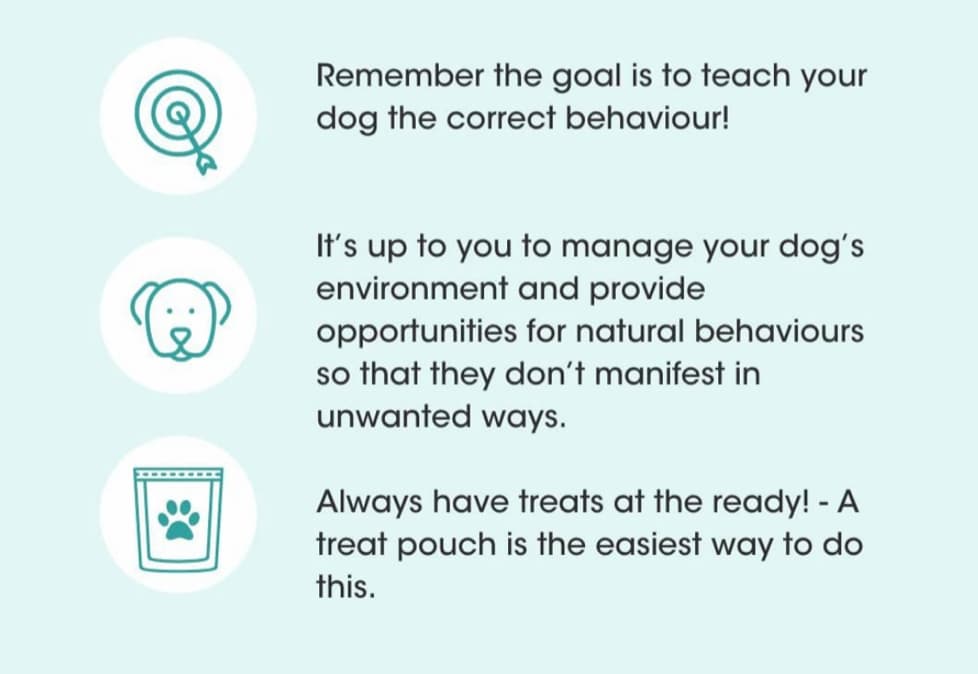The pet industry has made leaps and bounds in the last decade, this includes the dog training industry specifically. The growth of research and movement towards Force-free and Positive Reinforcement training only reflects Owners desire to treat their pets ethically and how they’re truly a part of the family.
There’s no doubt that dominance theory training is fast becoming a thing of the past. Read on to find out why.
What is Dominance Theory?
Dominance theory is a dog training theory/mindset that stems from research by researchers such as David Mech on groups of wolves. Much of this research contributed to the popularly known ‘alpha’ theory that there must be an ‘alpha’ in each ‘pack’ and this determines the behaviour of each member in the ‘pack’.
The research studied wolves’ behaviour regarding resources and how this influenced their interactions with each other. This led to situational dominance where wolves were competing for resources such as food or a mate that was mistaken for competing for power. Fast forward a few years, and Dominance Theory evolved into its own technique/mindset of dog training.
Trainers took the misguided concept that an ‘alpha’ can rule a ‘pack’ and began using methods that they believed would make them the ‘alpha’ in their dog’s life. This mindset suggests that the motive behind certain dog behaviour is to assert dominance or achieve a higher status over their human companion. Therefore their thinking dictates that the owner or trainer’s reactions should in response assert dominance over the situation, often this involves aggressive or unsafe behaviour towards dogs.
Example:
Dog Behaviour: Pulling on the lead.
Dominance Theory interpretation: The dog is trying to lead the human and this behaviour deserves a ‘correction’ such as yanking the lead, pulling them back harshly or forcing the dog to walk behind them.
What the behaviour means: The dog is curious about their environment and keen to sniff something or greet another dog.
 How Dominance Theory is seen as outdated
How Dominance Theory is seen as outdated
There’s so much we now know about dogs, especially when raised in family homes. But it even stems deeper than this. Dominance Theory is widely recognised as an outdated mindset, and here’s why:
Firstly, the study was done on wolves. Whilst dogs are descendants of wolves, there are over 10,000 years of domestication between the two species so it is not safe to assume that their behaviour is identical let alone similar.
The second biggest factor is that wolves were in an environment where they had to fight for resources, this is not something that domesticated dogs have to do often let alone ever so we can’t interpret their behaviour towards resources based on the wolves’.
A healthy relationship between owner and dog should be co-dependent, not dominant, we know this because we can get a dog to display desired behaviours by training them with force-free and positive reinforcement methods without negatively impacting their physical or mental health.
Dominance theory focuses on training undesirable behaviours out of the dog, but with other humane and effective methods, they focus on teaching the dog the right behaviour instead. The behaviours that a dominant mindset would see as seeking dominance are actually coming from a state of social confusion, frustration, fear, anxiety, pain or learning.
Does punishment teach dogs?
Using punishment to teach dogs can technically work, it can cause the dog to suppress the behaviour out of fear. However, the impact on their mental health can be detrimental and often cause other undesirable behaviours to arise. For example, if you were to smack a dog on the nose for stealing food off a plate, you could cause them to be fearful when people come near their face and as a result, bite. An ethical alternative would be to teach the dog not to take the food off the plate and reward them for doing this so they associate not taking food off the plate as a safe and positive interaction.
There is always a reason for a behaviour in a dog, often the most problematic issues such as reactivity, aggression or separation anxiety are stemming from a place of fear or frustration and instilling more fear in the pet is only going to aggravate the behaviour. The solution is to teach them that they don’t need to be afraid or give them an outlet for their frustration, this will manage the behaviour rather than suppress it. That is the key difference between dominance training and positive methods, dominance suppresses behaviour which results in further frustration and fear which manifests further issues and positive methods teach correct behaviour and manage fear or frustration so it doesn’t manifest.
Examples of behaviours commonly misunderstood as dominance:
Dogs
Humping – The dog is trying to diffuse the situation, trying to make themselves feel good in a bad situation, trying to stop the other thing from moving or trying to settle themselves.
Resource guarding – a resource is anything that the dog finds of value at a specific point in time. They’re guarding the item because they feel like it will be taken from them and want to protect it. It is a very natural behaviour which can be created by taking things from their mouth and taking their food away from them when they’re eating, so it’s important not to do this.
Humans
Punishment – A dog and its owner have a dependent relationship. A dog relies on its owner for food and stability, so humans need to be in control. In this instance, being in control means creating stability, not exhibiting dominance.
Setting boundaries in the home – It is ok not to let your dog on every piece of furniture and each room. However, if you are going to limit your dog, you need to provide an alternative space for them to relax and unwind. Consistency is key to maintaining these boundaries.
So what’s the alternative?
Positive reinforcement. What is it and why should I use it?
Positive reinforcement or force-free training are both prominent in the training community, so it’s easy to seek support or guidance, especially if you’ve been misguided by a dominant/punishment trainer before.
Here is a refresher on Positive Reinforcement to get you started.




1 comment
It’s A Piece Of Great Information. Thank You For This Information.